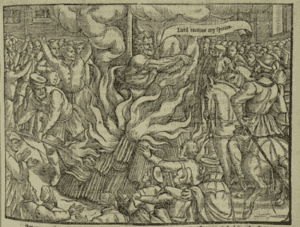
John Rogers is Burned to Death at the Stake in Smithfield, England. The First of Queen “Bloody” Mary’s Reign
John Rogers burned to death at a stake at Smithfield, England on this Monday morning, February 4,1555. Among the onlookers who encouraged him were his own children. What monstrous crime had earned him this cruel death? Born about 1500, Rogers was educated at Cambridge. He became a Catholic priest and accepted a position in the church at the time that the Protestant Reformation was in full swing. His conscience told him that certain teachings of his established Church were wrong and he resigned, moving to Antwerp, Holland, where he ministered to English merchants. In Holland, he became friends with ...
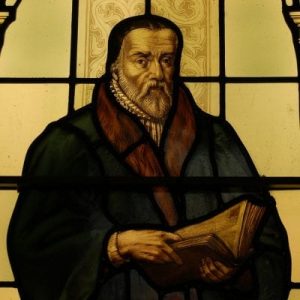
Religious Reformer William Tyndale Burned at the Stake for Trying to Make the Bible Available to Common People
William Tyndale, 12 years after he left England, was led from prison to the stake where he was strangled, then his body burned. He had time to utter one last cry: “Lord, open the King of England’s eyes.” Tyndale had suffered for the cause “poverty, … exile out of my natural country and bitter absence from my friends, … my hunger, my thirst, my cold, the great danger wherewith I am everywhere encompassed, … and hard and sharp rightings which I endure.” He insisted that death would be more pleasant than life if it were really true that men could ...

Protestant Reformation Begins: Martin Luther Nailed his 95 Theses to the Door of the Wittenberg Castle Church, Protesting the Sale of Indulgences and Other Practices
Sometime during October 31, 1517, the day before the Feast of All Saints, the 33-year-old Martin Luther posted theses on the door of the Castle Church in Wittenberg. The door functioned as a bulletin board for various announcements related to academic and church affairs. The theses were written in Latin and printed on a folio sheet by the printer John Gruenenberg, one of the many entrepreneurs in the new print medium first used in Germany about 1450. Luther was calling for a "disputation on the power and efficacy of indulgences out of love and zeal for truth and the ...

Erasmus Published a Greek-Latin Parallel New Testament
Erasmus, with the help of printer John Froben, published a Greek-Latin Parallel New Testament. The Latin part was not the corrupt Vulgate, but his own fresh rendering of the text from the more accurate and reliable Greek, which he had managed to collate from a half-dozen partial old Greek New Testament manuscripts he had acquired. This milestone was the first non-Latin Vulgate text of the scripture to be produced in a millennium… and the first ever to come off a printing press. The 1516 Greek-Latin New Testament of Erasmus further focused attention on just how corrupt and inaccurate the Latin ...

Religious Reformer, Jan Hus, Burned at the Stake as a Heretic
Jan Hus, a Bohemian religious reformer, was condemned as a heretic and burned at the stake for his belief that Christ alone was the head of the church and that people should be permitted to read the Bible in their own language and in their own homes. Manuscripts of Wycliffe's bible were used as kindling for the fire that burned him at the stake. Ryan M. Reeves (PhD Cambridge), an Assistant Professor of Historical Theology at Gordon-Conwell Theological Seminary, documentary on Hus... Movie: John Huss - Story of a Marty ...

John Wycliffe, the First to Translate the Entire Bible into English, Dies
Wycliffe had been born in the hinterlands, on a sheep farm 200 miles from London. He left for Oxford University in 1346, but because of periodic eruptions of the Black Death, he was not able to earn his doctorate until 1372. Nonetheless, by then he was already considered Oxford's leading philosopher and theologian. In 1374 he became rector of the parish in Lutterworth, but a year later he was disappointed to learn he was not granted a position at Lincoln nor the bishopric of Worcester—setbacks that some have seized upon as motives for his subsequent attacks on the papacy ...
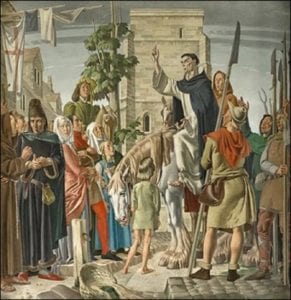
John Ball, a leader in the Peasants’ Revolt, is hung, drawn and quartered in the presence of Richard II of England
John Ball was born in St Albans in about 1340. Twenty years later he was working as a priest in York. He eventually became the priest St James' Church in Colchester. (1) Ball believed it was wrong that some people in England were very rich while others were very poor. Ball's church sermons criticising the feudal system upset his bishop and in 1366 he was removed from his post as the priest of the church. (2) Ball now had no fixed job or home and he became a travelling priest and gave sermons, whenever he found "a few people ...
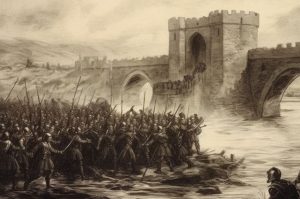
The Battle of Stirling Bridge
The Battle of Stirling Bridge, fought on September 11, 1297, marked a turning point in the First War of Scottish Independence and solidified William Wallace's status as a national hero. This battle was a testament to Wallace's strategic genius and the determination of the Scottish forces to resist English domination. Stirling Bridge was a crucial crossing point over the River Forth, and controlling it was key to maintaining supply lines and communication. The English army, led by John de Warenne, Earl of Surrey, and Hugh de Cressingham, underestimated the Scottish forces and made a critical tactical error by attempting to cross ...
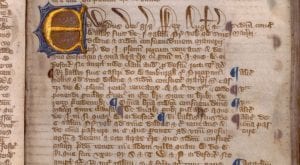
King John Affixes His Seal to the Magna Carta, an Inspiration for the US Constitution and Bill of Rights
"The democratic aspiration is no mere recent phase in human history . . . It was written in Magna Carta." --Franklin Delano Roosevelt, 1941 Inaugural address On June 15, 1215, in a field at Runnymede, King John affixed his seal to Magna Carta. Confronted by 40 rebellious barons, he consented to their demands in order to avert civil war. Just 10 weeks later, Pope Innocent III nullified the agreement, and England plunged into internal war. Although Magna Carta failed to resolve the conflict between King John and his barons, it was reissued several times after his death. On display ...

